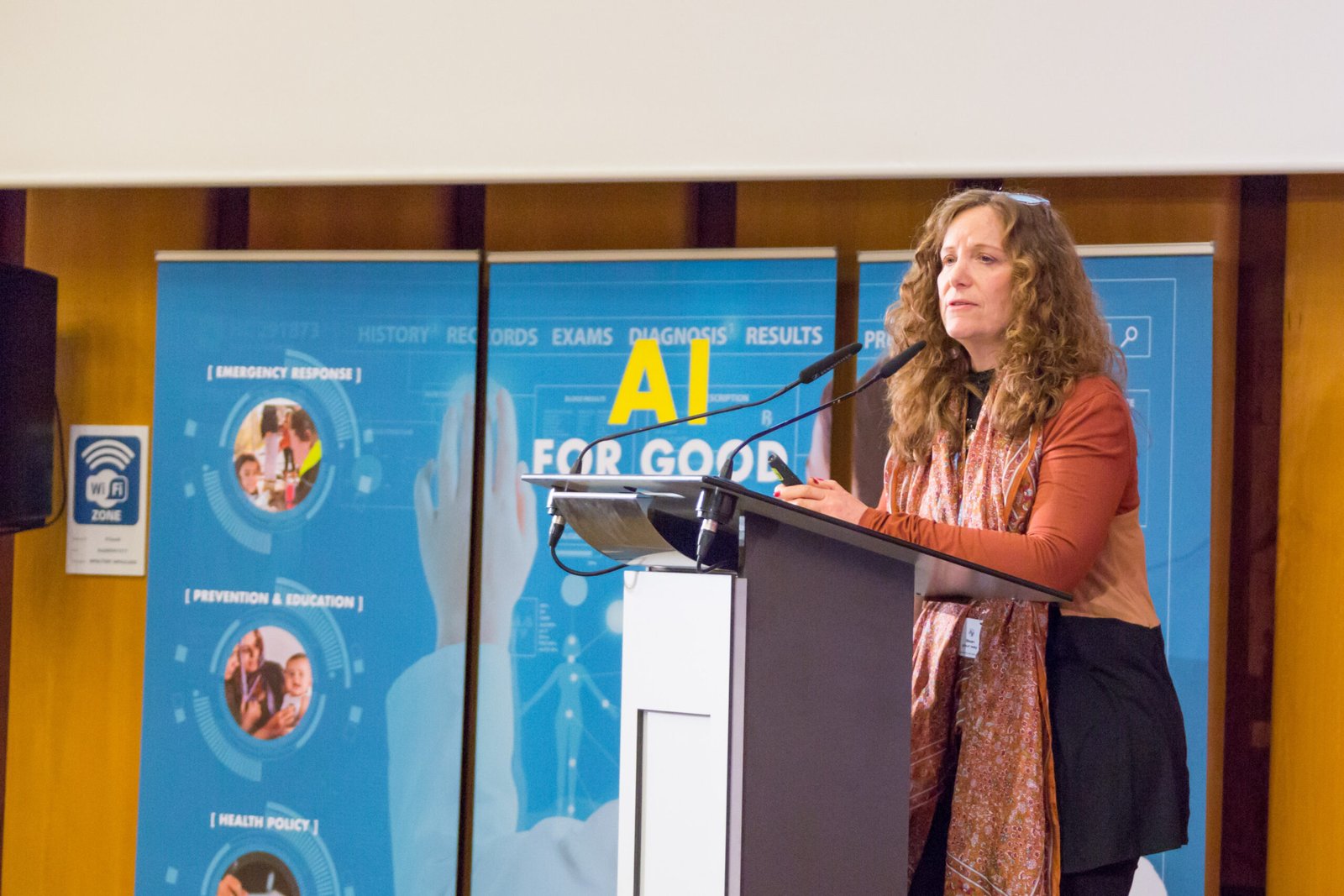Imagine handing over the keys to the world’s most powerful supercomputer and saying, “Learn everything you can—by watching us online.” It’s a dizzying, almost frightening idea: the internet, with all its chaos and brilliance, has become the classroom for artificial intelligence. Every meme, every tweet, every candid comment in a forum—AI is soaking it all up, learning about us in ways we might not even notice. But what does it mean for a machine to learn from the messy, vibrant, and sometimes dark corners of human life online? The answer is both thrilling and a little unnerving.
The Wild Frontier of Digital Learning
Training AI on internet data is like sending a student into a school with no teachers and no rules—just a massive, noisy playground. Unlike a traditional classroom, the internet offers a nonstop flood of information, ranging from expert knowledge to wild speculation and outright misinformation. The AI learns from it all, trying to make sense of the real and the fake, the kind and the cruel, the profound and the trivial. This means the AI’s version of “human behavior” is shaped by the entire spectrum of what people post online, not just the polished or idealized parts. In a way, it’s like teaching a child about life by letting them loose in a bustling city with no supervision.
The Data Buffet: What AI Consumes
The internet is a feast for any data-hungry machine. Social media posts, news articles, product reviews, Wikipedia entries, and countless other digital breadcrumbs make up the smorgasbord. AI models, like large language models, are trained on billions of words—from the heartfelt to the hilarious, the wise to the weird. But this buffet isn’t curated; AI doesn’t always know if it’s gobbling down a nutritious fact or junk-food misinformation. The result? A reflection of humanity, both its beauty and its blemishes, served up in lines of code.
Biases: The Uninvited Guests
Every piece of content online is shaped by someone’s personal perspective, culture, or agenda. When AI learns from these, it inevitably picks up on our biases—sometimes in subtle, sometimes in glaring ways. For example, if a certain viewpoint is overrepresented online, the AI might treat it as the “norm.” This can lead to algorithms that unintentionally reinforce stereotypes or exclude minority voices. It’s like a mirror that sometimes distorts what it reflects, making the familiar seem exaggerated and the rare almost invisible.
The Echo Chamber Effect
The internet loves to echo itself. Viral trends, memes, and opinions bounce around social media, amplifying some ideas while drowning out others. When AI is trained on this echo chamber, it can start to favor popular phrases or viewpoints, even if they’re not accurate or helpful. Imagine trying to learn about humanity by only listening to the loudest voices in a room—it’s easy to miss the quiet, thoughtful ones. This effect can make AI seem repetitive, reinforcing internet fads or misconceptions instead of offering fresh insights.
Learning Our Language—And Our Flaws
AI models are masters of language, but their training data is full of slang, sarcasm, and sometimes even hate speech. Machines can become surprisingly good at mimicking human tone and style, but they also risk repeating our worst habits. Think of it like a parrot that doesn’t know which words are kind or cruel—it just repeats what it hears. The challenge is teaching AI to understand context, so it knows when a joke is lighthearted and when it crosses the line.
The Rise of Deepfakes and Digital Deception
When AI learns from the internet, it also learns how to create—sometimes blurring the line between real and fake. Deepfakes, those eerily convincing videos or audio clips, are a direct result of AI mastering human behavior online. These tools can be used for art, satire, or mischief, but they also open the door to deception. It’s a reminder that what AI learns online can be put to use in ways that surprise—and sometimes shock—us.
Empathy and AI: Can Machines Care?
One of the most fascinating questions is whether AI can truly understand human emotions. By analyzing online conversations, AI gets a crash course in empathy—at least in theory. It can learn to recognize sadness in a tweet or excitement in a message. But recognizing emotion isn’t the same as feeling it. AI’s understanding is always secondhand, filtered through the words and emojis we use. Imagine teaching someone to feel love by showing them romantic comedies; it’s just not quite the same as real life.
Privacy: The Cost of Open Data
Every piece of data online has a story behind it, and sometimes those stories are more personal than we’d like. AI models trained on internet data can accidentally learn from sensitive information—details people never intended to share widely. This raises big questions about privacy. Who owns the data that trains AI? And what happens when machines remember things we’d rather forget? It’s a bit like writing a diary, only to discover someone else is reading it.
The Internet’s Dark Side: Toxicity and Trolling
Let’s not sugarcoat it—the internet can be a rough place. Trolling, harassment, and toxic behavior are unfortunately common. When AI learns from these environments, it can start to mimic or even amplify negativity. Some early chatbots turned hostile or offensive because their training data included too much bad behavior. It’s a sobering reminder: if we want better AI, we might need to clean up our own act online.
Creativity Unleashed: AI as Artist and Muse
On the flip side, the internet is also a playground for creativity. AI trained on art, music, poetry, and memes can produce surprisingly original works. From writing quirky stories to generating stunning digital art, AI is learning to be creative in ways that can inspire humans right back. It’s like having an endlessly inventive collaborator—one that never gets tired or runs out of ideas.
Teaching AI Ethics: Can Machines Learn Right from Wrong?

Ethics online is a moving target. What’s acceptable in one community might be taboo in another. When AI is trained on global internet data, it faces a dizzying array of moral codes. Scientists are working hard to teach machines the difference between right and wrong, but it’s a challenge without clear answers. Imagine giving a robot a rulebook with thousands of conflicting rules—no wonder it sometimes gets confused.
Global Voices: Diversity or Homogenization?
The internet connects people from every corner of the globe, but not all voices are equally heard. English dominates, Western perspectives often take center stage, and smaller cultures can get drowned out. AI models may end up reflecting a narrow slice of humanity unless we actively seek out more diverse data. It’s a bit like learning about world cuisine by only eating hamburgers; you miss out on all the other flavors.
The Speed of Learning: AI Never Sleeps

Unlike humans, AI can learn nonstop, 24/7, crunching through mountains of data in the blink of an eye. This relentless pace means machines can pick up new trends almost instantly. But it also means mistakes can spread just as fast. If a harmful idea goes viral, AI might adopt it before anyone notices. It’s a race between progress and caution, and the finish line keeps moving.
Humans in the Loop: Guiding AI’s Growth
Despite all its power, AI still needs human guidance. Researchers, engineers, and everyday users play a vital role in shaping what AI learns and how it behaves. By curating data, flagging harmful content, and setting boundaries, we help steer AI in a positive direction. It’s a partnership—one where both sides have a lot to teach each other.
The Future: Will AI Understand Us or Remake Us?
As AI becomes more advanced, the big question is whether it will simply reflect who we are—or start to shape who we become. Will machines trained on our online selves help us grow, or will they lock us into old patterns? The answer depends on the choices we make now, as teachers and as students in this strange new classroom. The internet is teaching AI, but maybe, just maybe, AI can help us learn something new about ourselves.



